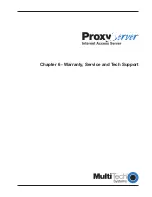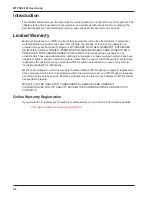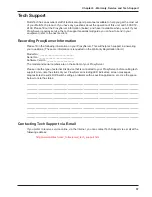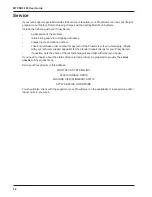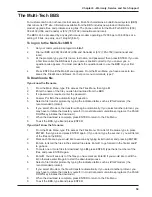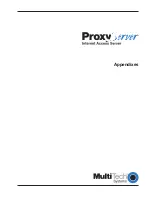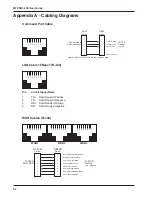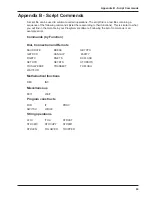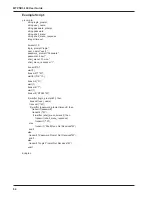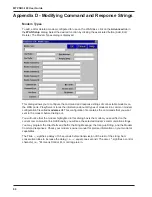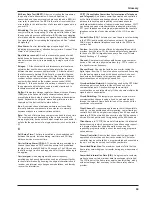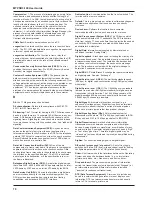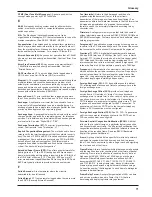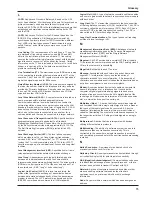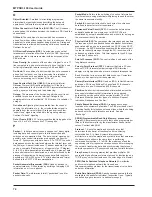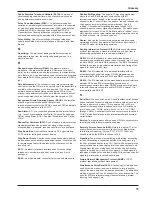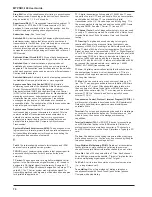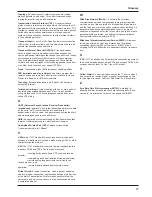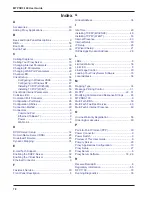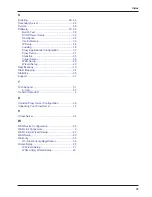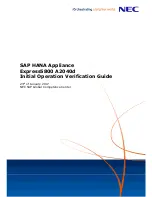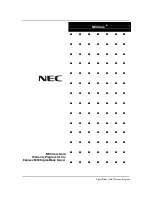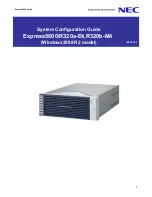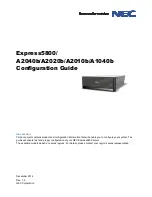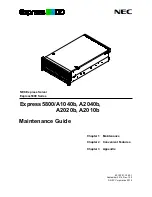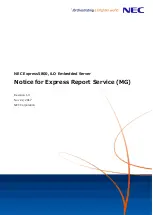
69
Glossary
Bit Error Rate Test (BERT): A device or routine that measures
the quality of data transmission. A known bit pattern is
transmitted, and the errors received are counted and a BER (bit
error rate) is calculated. The BER is the ratio of received bits in
error relative to the total number of bits received, expressed in a
power of 10.
Bit robbing: The use of the least significant bit per channel in
every sixth frame for signaling. The line signal bits “robbed” from
the speech part conveys sufficient pre-ISDN telephony signaling
information with the remaining line signal bits providing sufficient
line signaling bits for recreating the original sound. See “robbed
bit signaling”.
Blue Alarm: An error indication signal consisting of all 1s
indicating disconnection or attached device failure. Contrast “Red
Alarm” and “Yellow Alarm”.
Bps (bits per second): A unit to measure the speed at which
data bits can be transmitted or received. Bps differs from baud
when more than one bit is represented by a single cycle of the
carrier.
Bridges: 1. A functional unit that interconnects two local area
networks that use the same logical link protocol but may use
different medium access control protocols. 2. A functional unit
that interconnects multiple LANs (locally or remotely) that use
the same logical link control protocol but that can use different
medium access control protocols. A bridge forwards a frame to
another bridge based on the medium access control (MAC)
address. 3. In the connection of local loops, channels, or rings,
the equipment and techniques used to match circuits and to
facilitate accurate data transmission.
Buffer: A temporary storage register or Random Access Memory
(RAM) used in all aspects of data communications which
prevents data from being lost due to differences in transmission
speed. Keyboards, serial ports, muxes and printers are a few
examples of the devices that contain buffers.
Bus: A common channel between hardware devices either
internally between components in a computer, or externally
between stations in a communications network.
Byte: The unit of information a computer can handle at one time.
The most common understanding is that a byte consists of 8
binary digits (bits), because that’s what computers can handle. A
byte holds the equivalent of a single character (such as the letter
A).
C
Call Setup Time: The time to establish a circuit-switched call
between two points. Includes dialing, wait time, and CO/long
distance service movement time.
Carrier Group Alarm (CGA): A T1 service alarm generated by a
channel bank when an OOF condition occurs for a predefined
length of time (usually 300mS to 2.5 seconds). The CGA causes
the calls using a trunk to be dropped and for trunk conditioning to
be applied.
Carrier signal: An analog signal with known frequency,
amplitude and phase characteristics used as a transport facility
for useful information. By knowing the original characteristics, a
receiver can interpret any changes as modulations, and thereby
recover the information.
CCITT (Consultative Committee for International Telephone
and Telegraph): An advisory committee created and controlled
by the United Nations and headquartered in Geneva whose
purpose is to develop and to publish recommendations for
worldwide standardization of telecommunications devices. CCITT
has developed modem standards that are adapted primarily by
PTT (post, telephone and telegraph) organizations that operate
telephone networks of countries outside of the U.S. See also
ITU.
Central Office (CO): The lowest, or most basic level of switching
in the PSTN (public switched telephone network). A business
PABX or any residential telephone connects to the PSTN at a
central office.
Centrex: A multi-line service offered by operating telcos which
provides, from the telco CO, functions and features comparable
to those of a PBX for large business users. See also “Private
Branch Exchange”, “Exchange”.
Channel: A data communications path between two computer
devices. Can refer to a physical medium (e.g., UTP or coax), or
to a specific carrier frequency.
Channel Bank: A device that acts as a converter, taking the
digital signal from the T1 line into a phone system and converting
it to the analog signals used by the phone system. A channel
bank acts as a multiplexer, placing many slow-speed voice or
data transactions on a single high-speed link.
Circuit-switched Network: A technology used by the PSTN that
allocates a pair of conductors for the exclusive use of one
communication path. Circuit switching allows multiple
conversations on one talk path only if the end-users multiplex the
signals prior to transmission.
Circuit Switching: The temporary connection of two or more
communications channels using a fixed, non-shareable path
through the network. Users have full use of the circuit until the
connection is terminated.
Clear Channel: A transmission path where the full bandwidth is
used (i.e., no bandwidth needed for signaling, carrier framing or
control bits). A 64K bps digital circuit usually has 8K bps used for
signaling. ISDN has two 64K bps circuits, and a 16K bps packet
service of which part is used for signaling on the 64K channels.
Client-Server: In TCP/IP, the model of interaction in distributed
data processing in which a program at one site sends a request
to a program at another site and awaits a response. The
requesting program is called a client; the answering program is
called a server.
Cluster Controller: A device that can control the input/output
operations of more than one device connected to it. A cluster
controller may be controlled by a program stored and executed in
the unit, or it may be entirely controlled by hardware.
Committed Burst Size: The maximum number of bits that the
frame relay network agrees to transfer during any measurement
interval.
Committed Information Rate (CIR): An agreement a customer
makes to use a certain minimum data transmission rate (in bps).
The CIR is part of the frame relay service monthly billing, along
with actual usage, that users pay to their frame relay service
provider.
Summary of Contents for ProxyServer MTPSR3-100
Page 1: ...Internet Access for LAN Based Users Model MTPSR3 100 User Guide ...
Page 5: ...Chapter 1 Introduction and Description ...
Page 13: ...Chapter 2 Installation ...
Page 16: ...16 MTPSR3 100 User Guide ...
Page 17: ...Chapter 3 Software Loading and Configuration ...
Page 24: ...24 MTPSR3 100 User Guide ...
Page 25: ...Chapter 4 ProxyServer Software ...
Page 37: ...Chapter 5 Client Setup ...
Page 54: ...54 MTPSR3 100 User Guide ...
Page 55: ...Chapter 6 Warranty Service and Tech Support ...
Page 61: ...Appendixes ...
Page 67: ...Glossary of Terms ...

